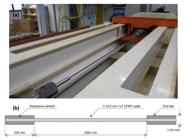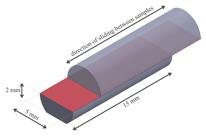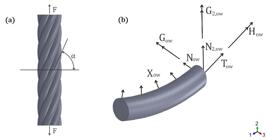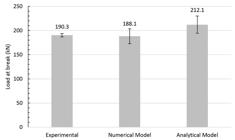Abstract
Carbon Fiber Reinforced Polymer (CFRP) cables, due to their outstanding performance in terms of specific stiffness and strength, are usually found in civil construction applications and, more recently, in the Oil & Gas sector. However, experimental data and theoretical solutions for these cables are very limited. On the contrary, several theoretical and numerical approaches are available for isotropic cables (metallic wire ropes), some of them with severe simplifications, nonetheless showing good agreement with experimental data. In this study, experimental tensile results for 1×7 CRFP cables were compared to a simplified analytical model (assumed transversally isotropic) and to a 3D finite element model incorporating the experimental uncertainty in important input parameters: longitudinal elastic modulus, Poisson’s ratio, static friction coefficient and ultimate tensile strain. The average experimental breaking load of the cable was 190.25 kN (coefficient of variation of 1.74%) and the agreement with the numerical model predictions were good, with an average-value deviation of –1.15%, which is lower than the experimental variations. The simplified analytical model yielded a discrepancy above 10%, indicating that it needs further refinement although much less time consuming than the numerical model. These conclusions were corroborated by statistical analyses (i.e. Kruskal–Wallis and Mann-Whitney).
Keywords
Composite cables; finite element analysis; analytical model; design of experiments; uncertainty quantification

 Thumbnail
Thumbnail
 Thumbnail
Thumbnail
 Thumbnail
Thumbnail
 Thumbnail
Thumbnail
 Thumbnail
Thumbnail




